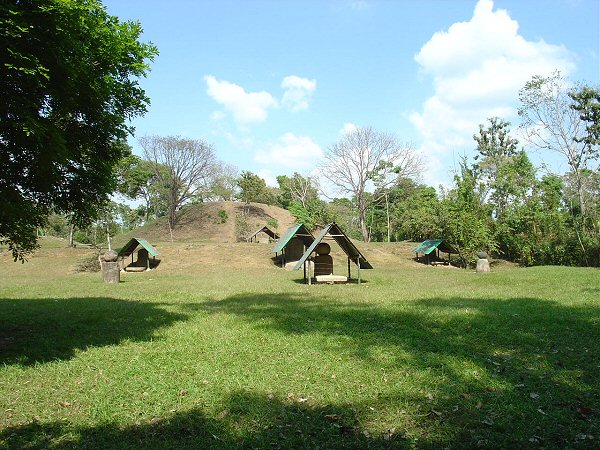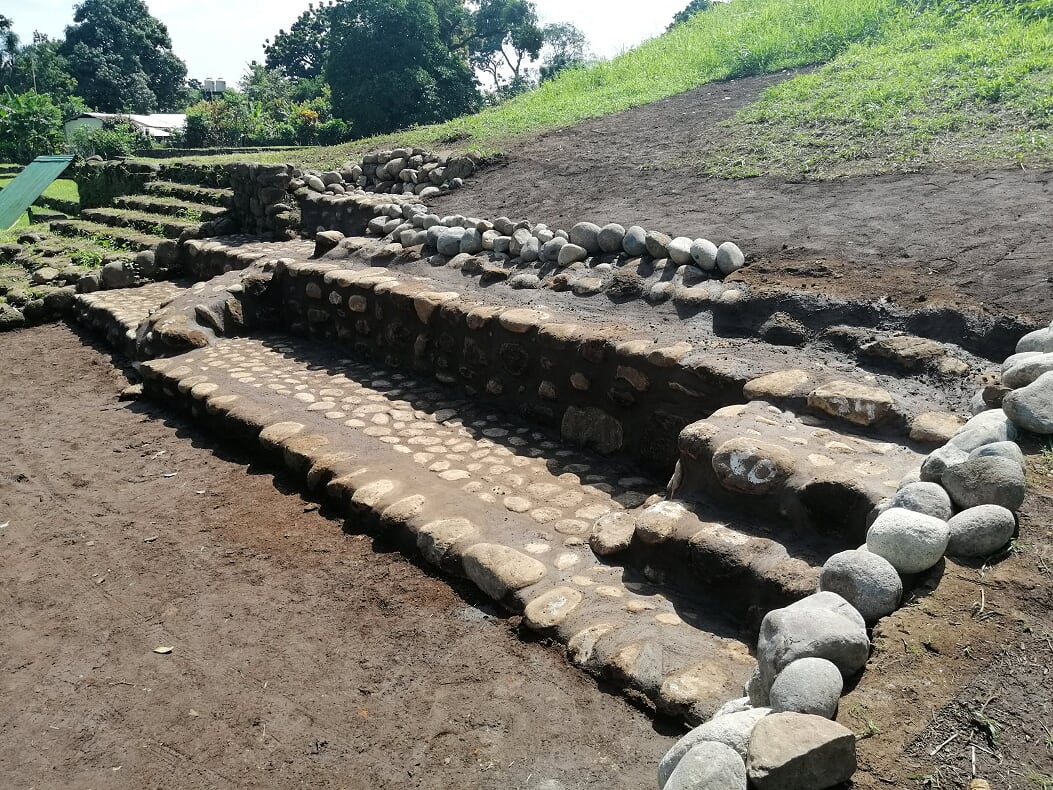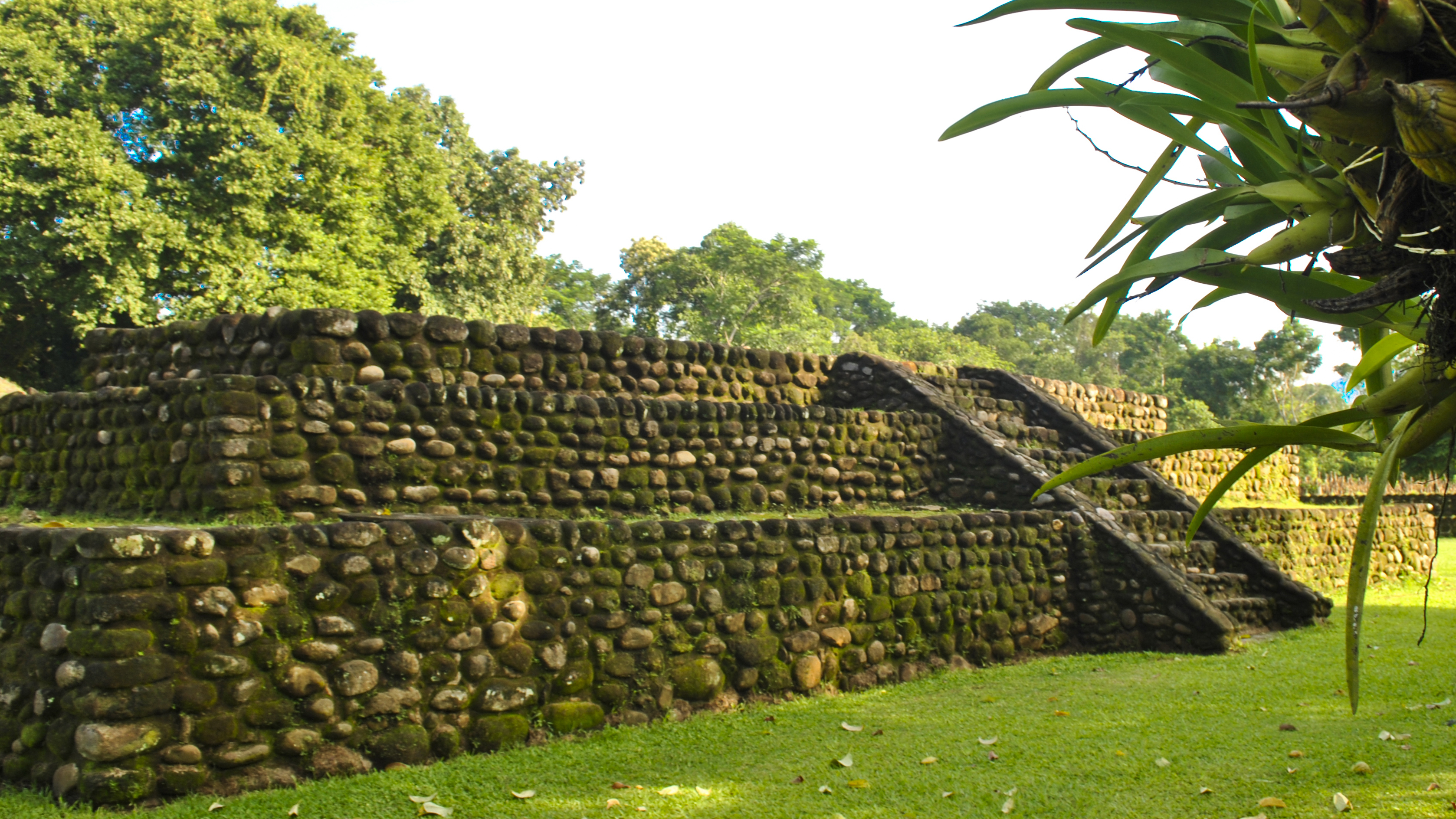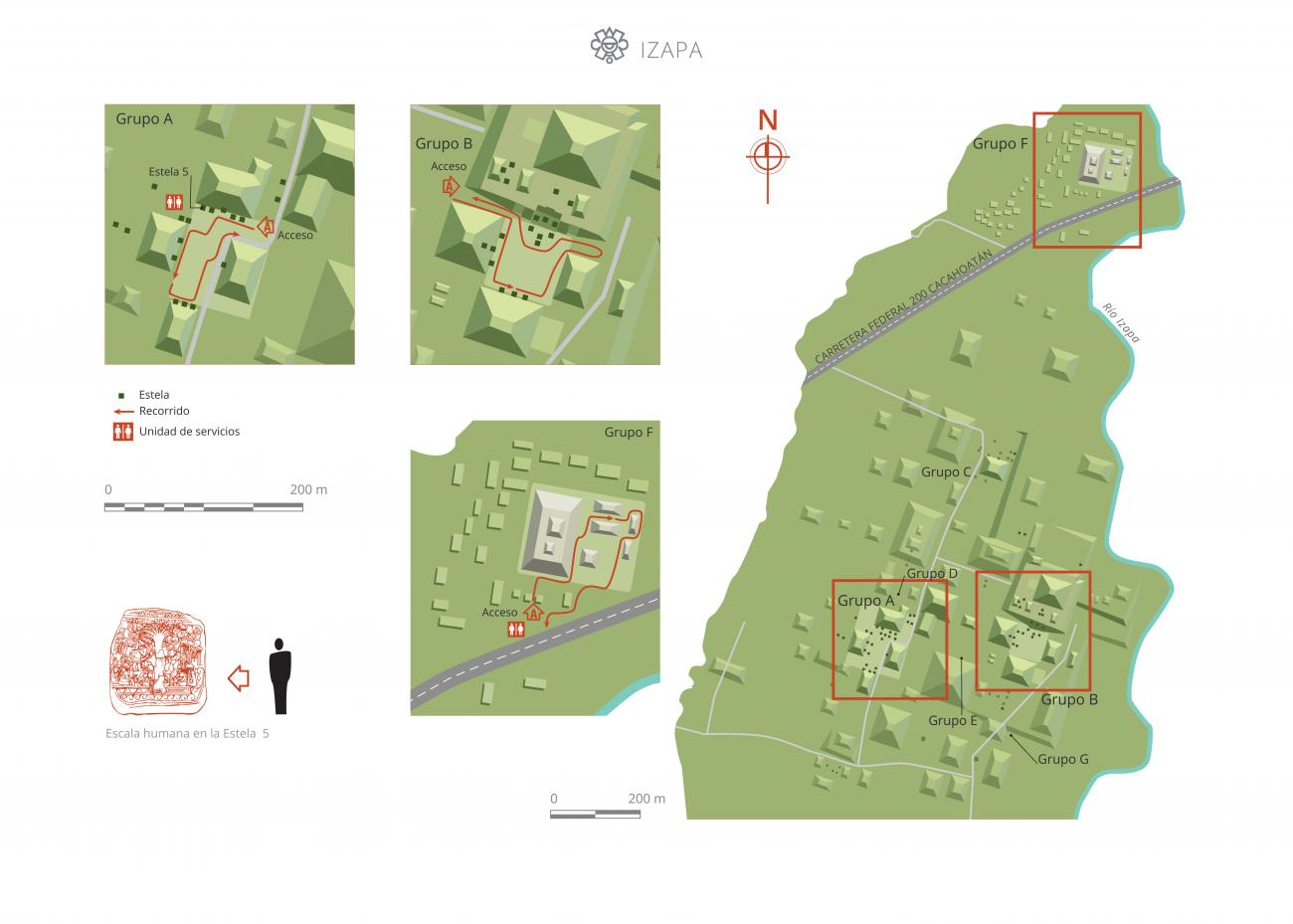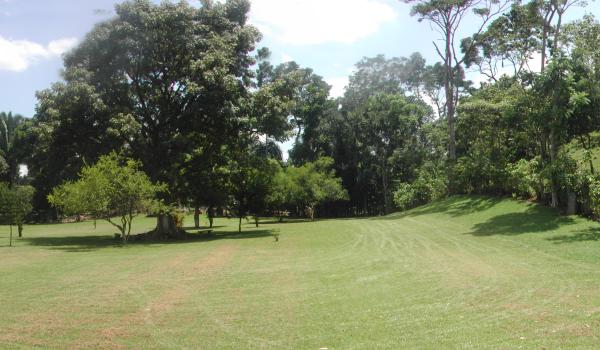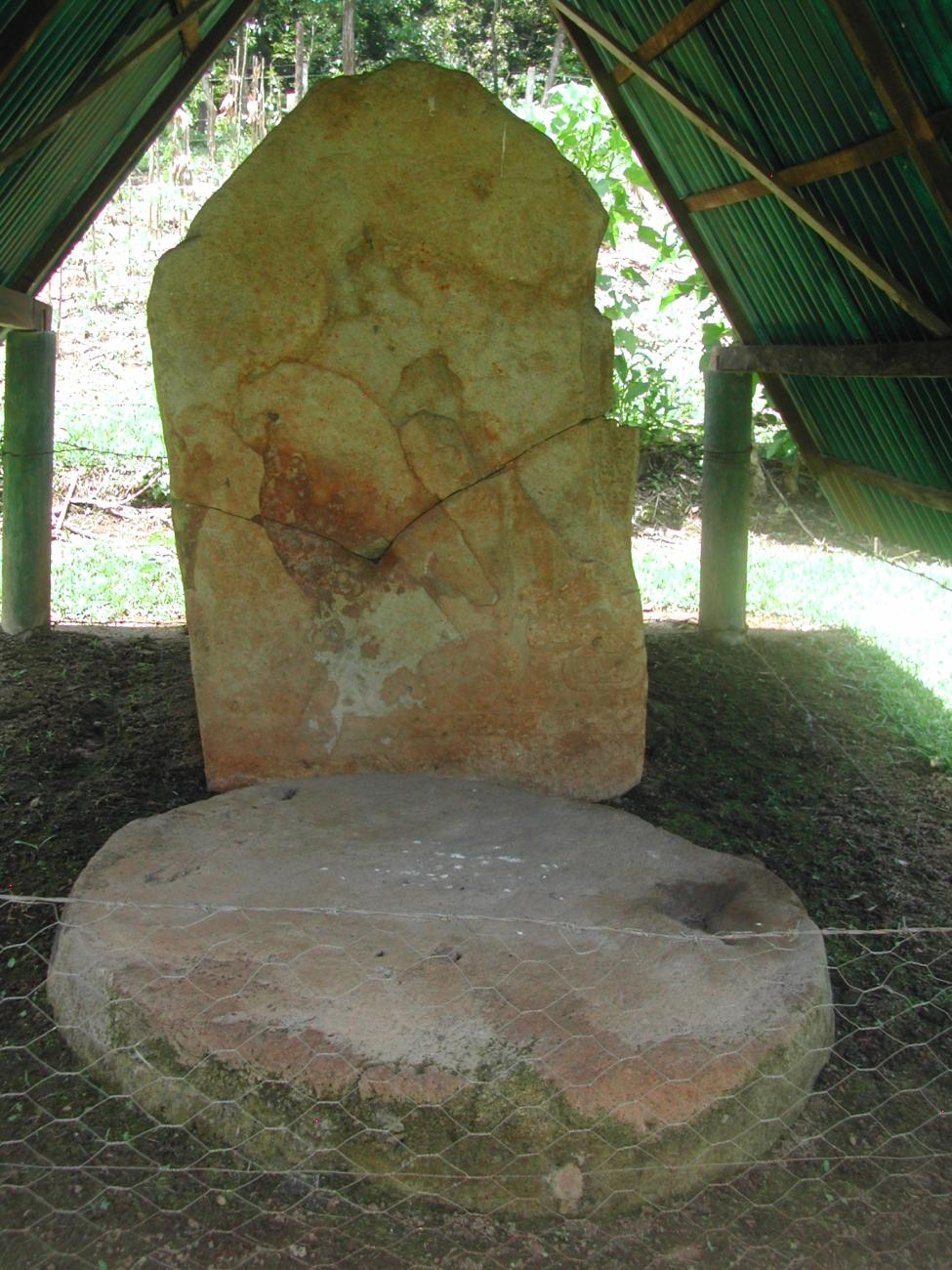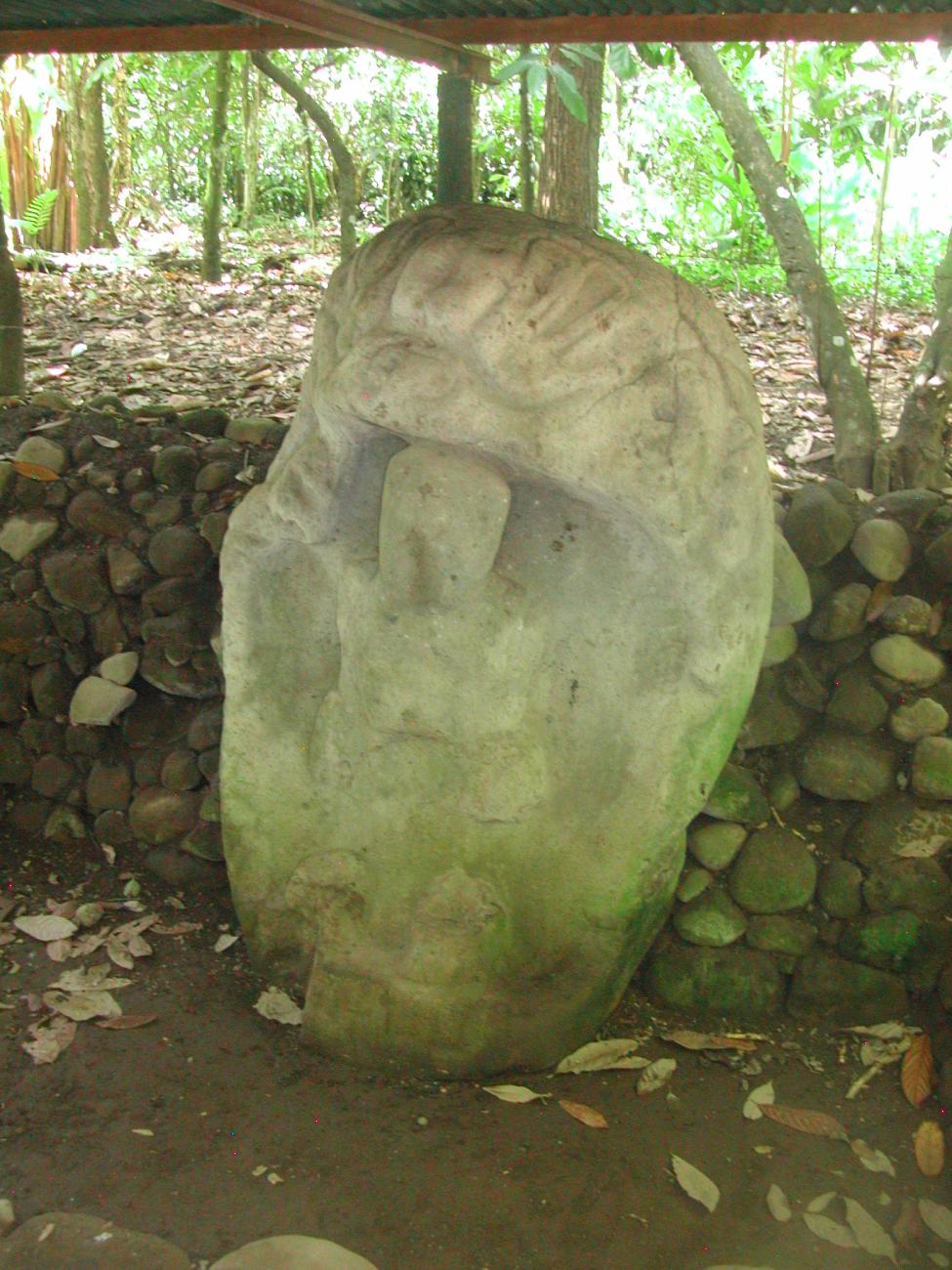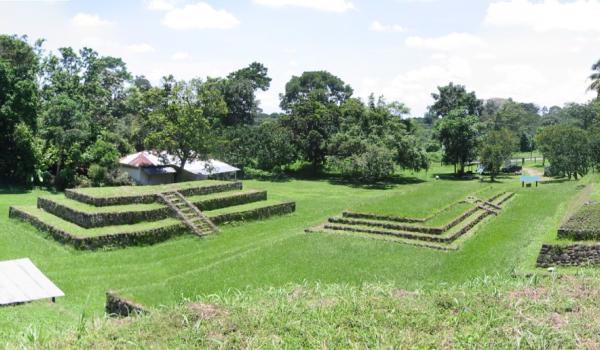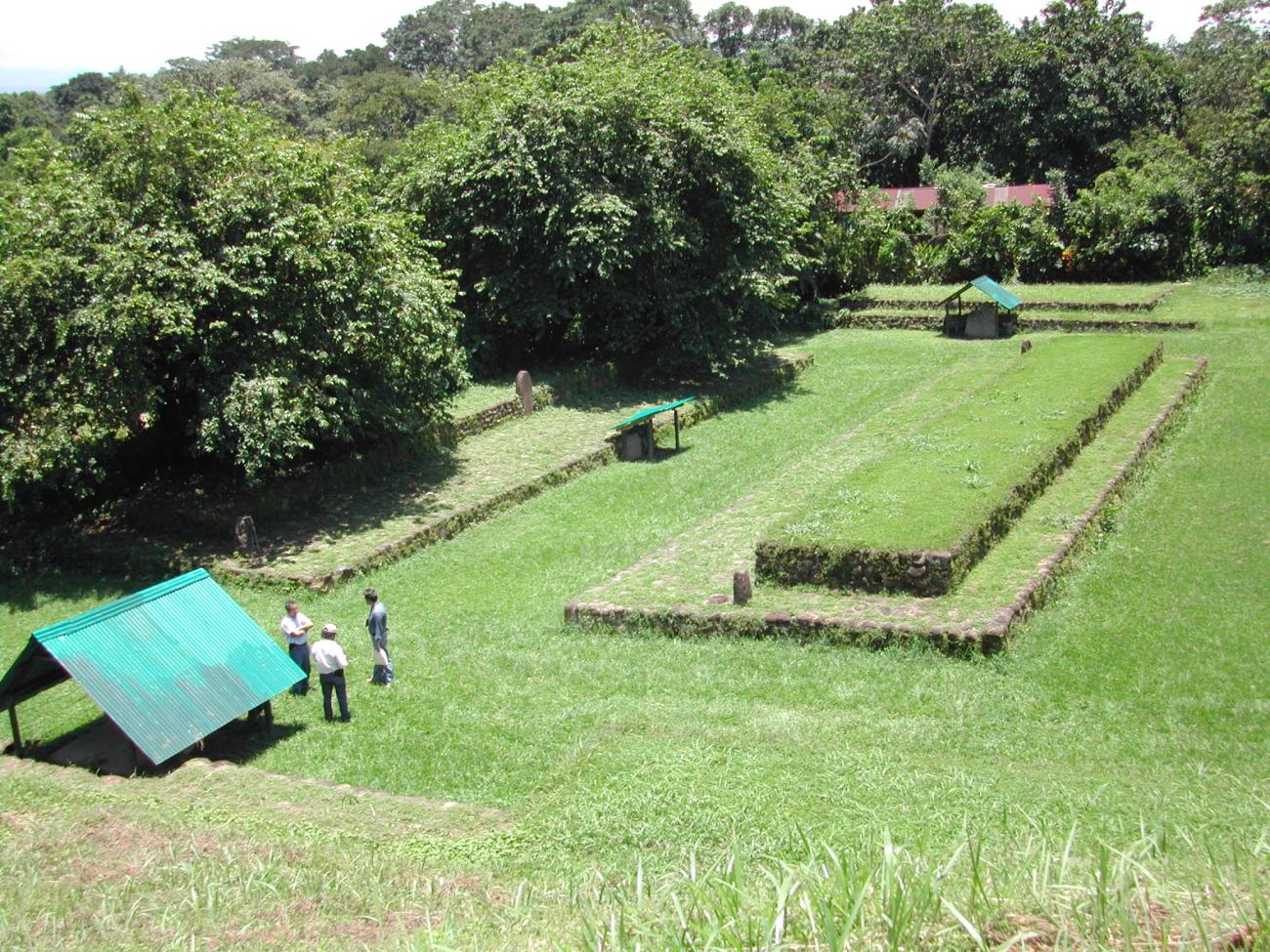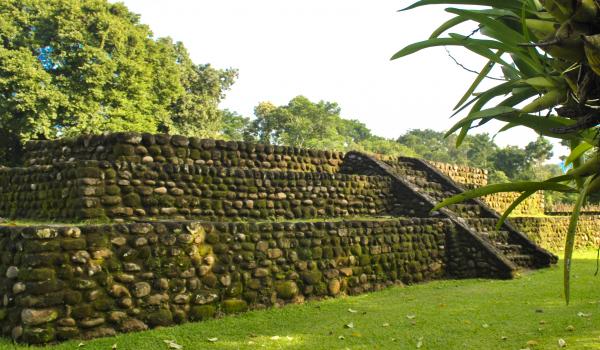It is possible that the name Izapa is a corruption of the Nahuatl word "Atzacua," meaning "place where water is stored." Another possible derivation is from "Ixtapan," meaning "on top of the sands." Culturally, the city was Mixe–Zoque and Maya. It saw many changes over the centuries, from the Preclassic or Formative to the Postclassic period, that is from 1500 BC till 1200 AD. The stone sculpting era at Izapa ran from the Middle and Late Formative in 650 BC till the Early Classic in 100 AD.
The Mixe–Zoque culture, which was related to Olmec, was present in Izapa, as was Mayan culture, whose characteristics subsequently spread throughout the Mayan region during the Classic. There is evidence of Mexica enclaves, established for the purpose of gathering tribute in the coastal area of Chiapas, in the form of Nahuatl settlement names, and this is evident from Tonalá to El Salvador in Central America. The site’s mounds show a distribution of plazas or patios, which were labeled in their order of excavation, with groups A and B in the center of the core group of monuments, then C, D, E, G and H surrounding this core and F to the north of these groups. Of the above, only groups A, B and F are open to the public.
Izapa was occupied continuously from 1500 BC to 1200 AD. The regular spacing and alignment of the buildings, as well as their consistent features, show that construction followed the same basic plans. At Izapa sculpture served both practical and spiritual purposes, expressing commemorative or mythological ideas about humans or the natural world. The sculptural centerpiece is a mass of stelae and altars, cultural features associated with the most important mounds, which subsequently made their appearance in the Mayan region. Many of these stelae include the portraits of personages from the Popol Vuh legend, a narrative of the ancient creation tradition of the highland Maya. Izapa style covered the coastal areas of modern Chiapas and Guatemala. The style is characterized by stelae carved in bas relief, with a vertical order divided into three planes: the heavens, the earth and the underworld, presenting scenes of deities and personages.



